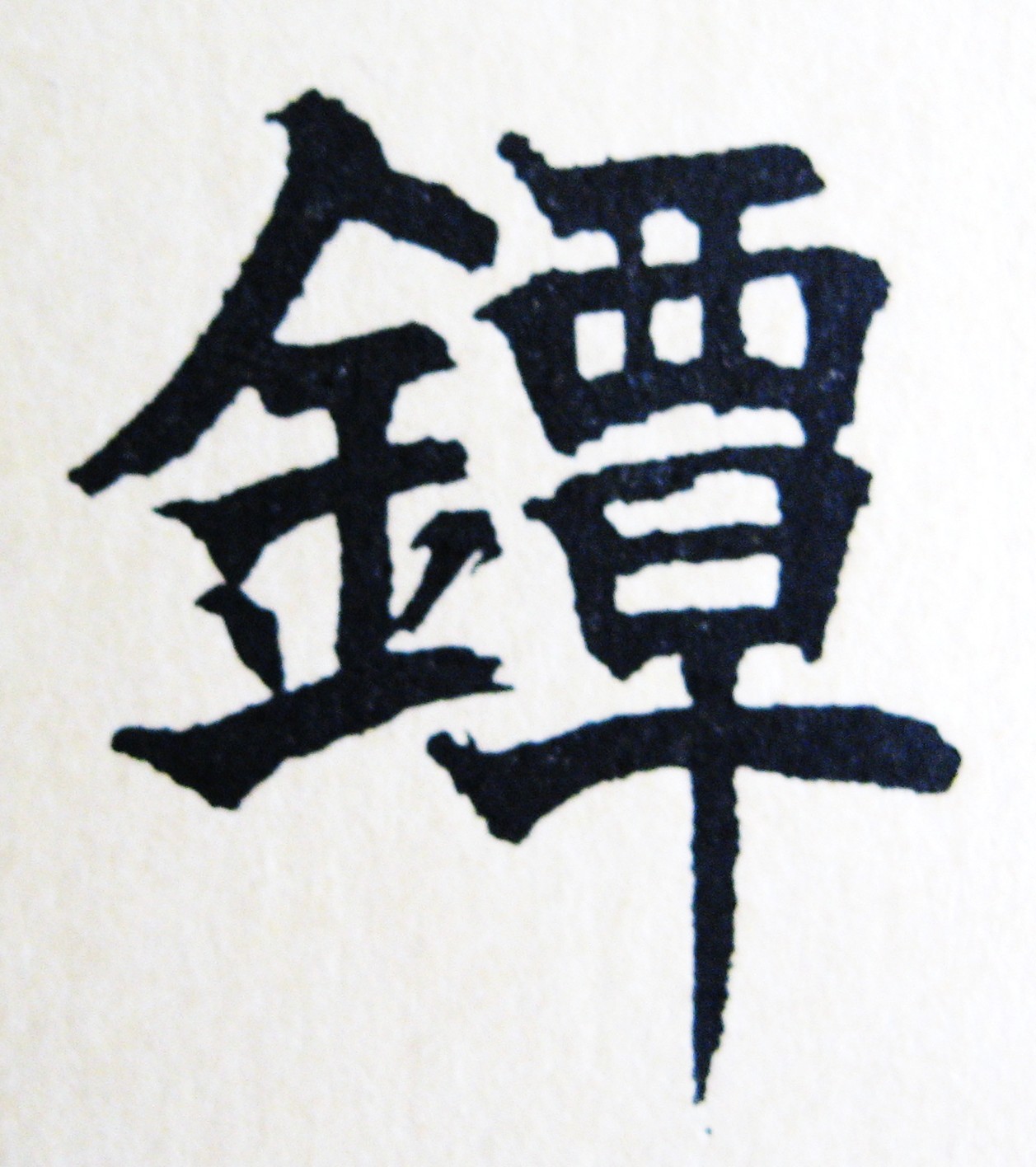|
Yondai 'JAKUSHI'
|
 |
|
Yondai 'JAKUSHI'
|
 |
| Haynes Index H02014.0 | $800.00 |
|
"Slightly oval goishi-gata iron plate that is carved with a classical Chinese style dragon leaping over the dragon gate on the Yellow River in China, signifying accomplishment. The ura with reverse of the same scene. With fine gold inlay placed in an elegant style. Signed on the omote, left side of seppa dai: 'JAKUSHI', H 02014.0. One of the many examples of the sosho signature of the Jakushi family school in the Edo period. They lived and worked in Nagasaki of Hizen Province." (Long) |
 |
|
7.75cm x 8.25cm x 0.45cm "The Jakushi family resided in Nagasaki for several generations. Their genealogy is not very clear. The first Jakushi was a priest who signed Somon Jakushi (Somon means priest). His style is gracious and elegant, denoting the period from Genroku to Hoei (1688-1710). His work is rare. The work of the later generations usually signed Jakushi, as had the first. Their plate is thicker and the decoration more detailed. The inlay is not sparse as in the work of the first. 4th generation Jakushi. The maker was the son of Shiroki Kizaemon, whose apparent collaboration with Kawamura Fukuyoshi led to the foundation of the Jakushi school of tsuba makers in Nagasaki. The yondai (4th generation) branched out from the Kawamura style of Nanga sansui landscapes, Sennin, and dragons. He formulated a new style more in step with Machibori tastes. The designs are pictorially flat. There is a clearly delineated seppa-dai and ryo-hitsu. Open work has been used in the design. The caricature-like dragon has an almost Kinai feeling. This phase of Jakushi work seems to take place in the mid to late 18th century." (Long) |
 |
 'JAKUSHI' |
  |
Purchase this Tsuba with Email to |
|
A Collaboration of Robert E. Haynes and Elliott D. Long |
|
|
| Return To Tsuba Collective Robert Haynes / Elliott Long Articles -- Tutorial Email elliott@shibuiswords.com |